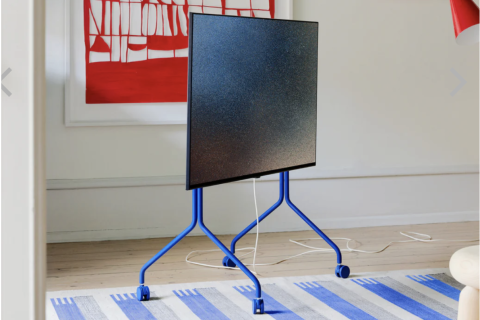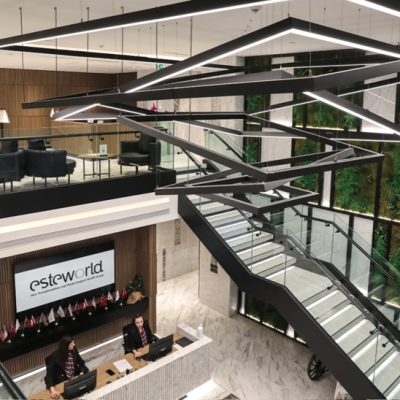Discover the exclusivity of Bonsoir of London's highest-quality sleepwear, designed to cater to the comfort and style needs of both men and women. Since 1926, their nightdresses,...
-
Learn more
-
Learn moreSince 2016, Nordic Knots of Fabian Berglund, his wife Liza Laserow, and his brother Felix has been producing the finest rugs and curtains by combining their backgrounds in...
-
Learn morePedestal TV stands are from a leading Danish interior brand. This brand's design sense is not just rooted in Scandinavian principles, but also in a keen understanding of...
-
Learn moreNativePath is a happy addition to any well-being journey—literally! The products are sourced from happy, healthy, pasture-raised cows that guarantee premium quality...
-
Learn moreProtekt Hydration Liquid is more than just hydration aid —it's a performance enhancer meticulously designed to replenish precious water lost during exercise. Its proprietary...
Ultra-Processed Food: Global Experts Demand Tobacco-Style Warnings Now
Global experts warn Ultra-Processed Food is a health threat, linking it to 12 diseases including depression and Type 2 diabetes. They demand 'tobacco-style' government action now.
Leading by Example: Bang Si-hyuk's Quiet Influence on a Global Industry
Discover how HYBE founder Bang Si-hyuk built BTS and transformed K-pop into a global industry through innovation, authenticity, and visionary leadership.
Female Hair Transplants in Turkey: 2025's New Trend
In 2025, more women are travelling to Turkey to restore not just their hair, but their confidence — with clinics like Hair Center of Turkey leading a movement that's redefining beauty, empowerment, and self-renewal.
Waterdrop Filter A2 Review: The Smart Hot and Cold Water Dispenser Every Home Needs
The Waterdrop A2 Reverse Osmosis Hot Cold Water Dispenser combines advanced filtration with intelligent temperature control, offering purified water that's hot, cold, or ambient, instantly. Designed for modern homes and offices, it delivers convenience, eco-efficiency, and premium design in one compact system.
Expert view
More news
Vitamin D Deficiency Found To Raise Risk Of Repeated Heart Attacks — Do You Face Danger?
New research links widespread Vitamin D deficiency to a 52% higher risk of repeat heart attacks. This discovery prompts a crucial shift.
Laos Methanol Poisoning: How It Happens and Should Tourists Worry About Drinking After Hostel Deaths?
Six tourists died in Laos after drinking methanol-tainted alcohol at a hostel in Vang Vieng. Experts urge caution but say travellers can stay safe with basic precautions.
Black Box Warning Facts: Why is the FDA Removing the Warning Label from Hormone Therapy Drugs
The FDA has removed black box warnings from menopause hormone therapy drugs, marking a major milestone for women's health after decades of fear over outdated risks.
More British Men Are Seeking Testosterone Therapy Because of Social Media: 'Unnecessary' Says NHS
The NHS reports a rise in men seeking testosterone therapy due to misleading social media claims. Experts warn of serious health risks from unnecessary treatment.
Can Microsoft's Latest Superintelligence AI Really Predict Disease Years In Advance? Here's What We Know
Microsoft's new medical superintelligence aims to transform diagnosis. Can this advanced AI truly predict disease years ahead and replace doctors? Here's what current technology tests show.
Is Your Airport on the FAA's Hit List? 40 Hubs Face Travel Misery as Agency Admits Safety 'Pressure'
Is your airport on the FAA's list? 40 major US hubs face a 10% flight cut as the agency admits 'pressure' and prioritises passenger safety.
Can Botulism Kill You? Here's Why The FDA Recalled Tomato Sauce Brands, Warns of Risk
The FDA has recalled First and Last Bakery's tomato sauce products over fears of botulism contamination — a rare but potentially deadly illness caused by Clostridium botulinum bacteria.
Pack Your Bags! Eurostar Launches 48-Hour Flash Sale with Fares to Europe's Top Cities from Just £29
Eurostar launches a 48-hour flash sale with 25% off tickets to Paris, Amsterdam, Brussels, Lille and Rotterdam for travel from November to March.
What Are Melatonin Side Effects? Doctors Warn Long-Term Use Could Lead to Health Problems - Even Death
A preliminary study set to be presented at the American Heart Association's 2025 Scientific Sessions found that long-term melatonin use may increase the risk of heart failure and death.
Don't Let Your FSA or HSA Funds Go to Waste: Use It To Start Therapy Before Year-End
Discover how to use your FSA or HSA funds for online therapy with BetterHelp before they expire. Take care of your mind and money this year-end.
Listeria‑Tainted Pasta Meals: Who Is at Highest Risk?
A nationwide Listeria outbreak linked to contaminated pasta meals has killed six and hospitalised dozens. Pregnant women, seniors, and immunocompromised individuals are most at risk.
Spy x Family Season 3 Episode 5 Release Date, Time, Spoilers and Where to Watch
Get the Spy x Family Season 3 Episode 5 release date, time, and where to watch. Find the full season 3 schedule, streaming details for Crunchyroll, and information on the English dub.
As India's Capital Chokes on Toxic Smog, Top Doctor Warns: Flee Delhi if You Can Afford It
Delhi's air turns toxic as a top pulmonologist urges residents to leave the city if they can. Rising smog, lung damage and health risks spark urgent warnings.
Blood Pressure Medication Recalled Because Of Cancer Risk: What Is Prazosin Hydrochloride
Teva Pharmaceuticals orders a nationwide recall of their Prazosin Hydrochloride capsules.
'If You're a "Broke American" Who Wants to Visit Japan, Do This': US Man Shares Clever and Smart Money Tips
A US traveller has gone viral for revealing clever ways to visit Japan on a tight budget, sharing practical money-saving tips that have resonated with aspiring tourists online.
Zingerman's Candy Bars Recalled Over 'Life-Threatening' Nut Risk Before Halloween
Zingerman's recalls Peanut Butter Crush and Ca$hew Cow bars over undeclared nuts ahead of Halloween, posing serious allergy risks to UK consumers.
Veteran Delta Flight Attendant Accidentally Deploys Emergency Slide — Causing $70,000 in Damage
A Delta flight attendant mistakenly deployed an emergency slide on an A220 in Pittsburgh, causing $70,000 in damage and trapping passengers onboard.
Tap Into the Sober October Trend: Reach 200,000+ Wellness-Driven Readers Ready to Engage!
Join 200,000+ readers embracing the California sober trend this Halloween. Save 15% on TribeTokes wellness products with code SOBEROCTOBER15.
Why Is LAX Grinding to a Halt? 'Critically Short' Staff Causes Over 6,000 Flight Delays Nationwide
LAX flights grounded as FAA cites nationwide air traffic controller shortage amid U.S. government shutdown.
An Airline is Charging People to Recline Their Seats – and It's Sparked a Heated Debate
Canadian airline WestJet is now charging economy passengers for the ability to recline, sparking a debate on 'recline rage' and the rise of absurd airline fees. Is this a new low for passenger comfort?











































